Ludwig van Beethoven
Tonight we watched “Immortal Beloved”, a truly great film about Beethoven’s life directed by Milos Forman. Seeing it again compelled me to write a few words about Beethoven’s music and the film. If you haven’t seen it, you may want to order it from Netflix.
When the film first came out, the trailers about it were rather off-putting, so we didn’t see it for some years after it was released. But we now own a copy and watch it several times per year.
Part of what makes the film great, apart from the directing and cinematography, is the quality of the soundtrack: Sir Georg Solti conducting the London Symphony in some of Beethoven’s greatest orchestral works and pianist, Murray Perahia, one of my personal favorites, playing parts of the “Moonlight” and several of Beethoven’s other most famous piano sonatas and concerti.
No author of Greek tragedies could have penned a story more heartbreaking than Beethoven’s real-life biography. Just imagine the profound effect that his hearing loss had on his life, relationships, and work. It is beyond ironic that one of the greatest Western composers to have ever lived wrote some of his greatest works while profoundly to completely deaf. Would Beethoven himself have felt that his legacy was worth the suffering he endured throughout his life, sometimes at his own hands?
Our personal library has a copy of Anton Schindler’s last biography of Beethoven, “Beethoven as I Knew Him,” in the English translation from the original German. With the film fresh in our consciousness, we now plan to read it again.
As it happens, NMPAS is doing a work by Beethoven, the Serenade Opus 25, for flute, violin and viola with members of the La Catrina Quartet, based at New Mexico State University in Las Cruces. It will be featured at the Annual Valentine’s concerts in Los Alamos and Santa Fe on February 4 & 5, 2017.
The Camino de Santiago Part III
We are now in Burgos, the historical capital of Castilla. Our hotel was literally across the square from the Burgos Cathedral, which we visited on the afternoon that we arrived in the City. Two hours before closing time were barely enough to absorb the richness, beauty and artistic wealth of this cathedral, which is one of the most beautiful and profound that I have ever seen. Here are photos of the cathedral that will convey something of that beauty:
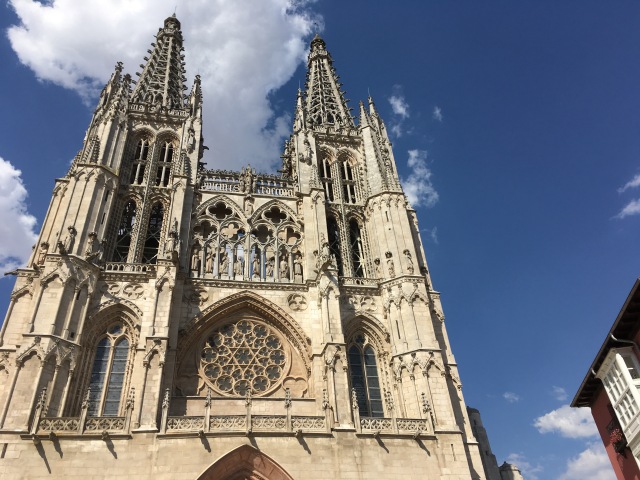
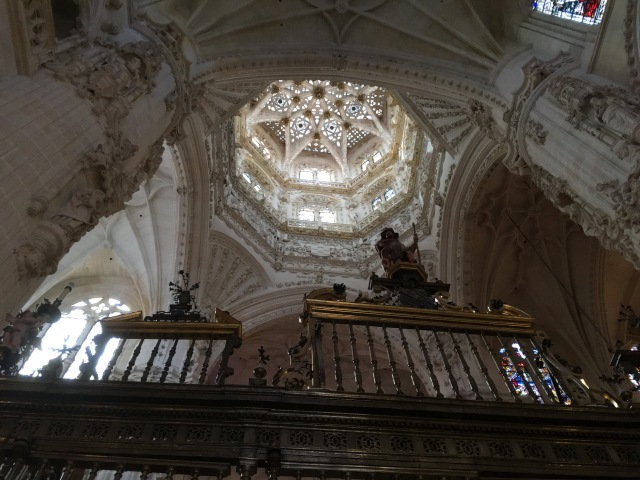
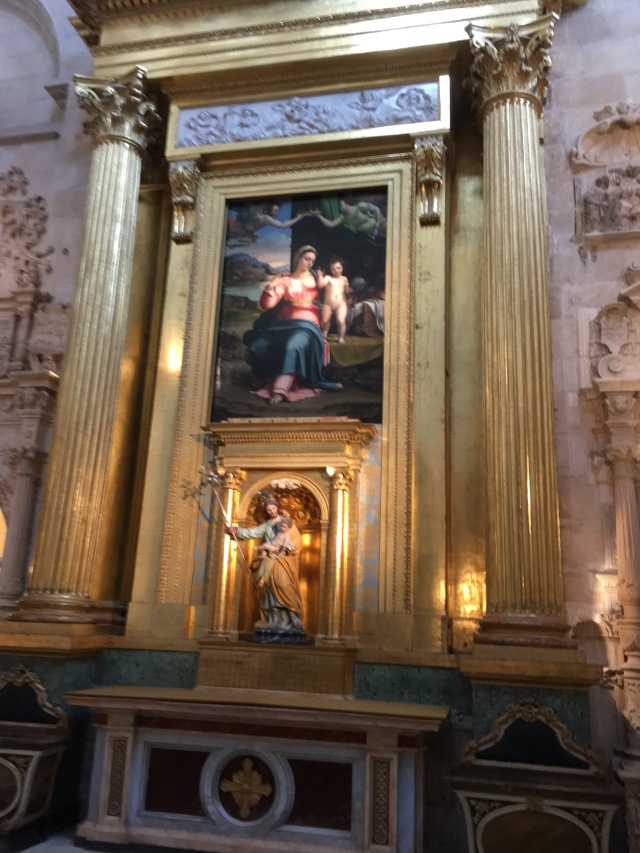

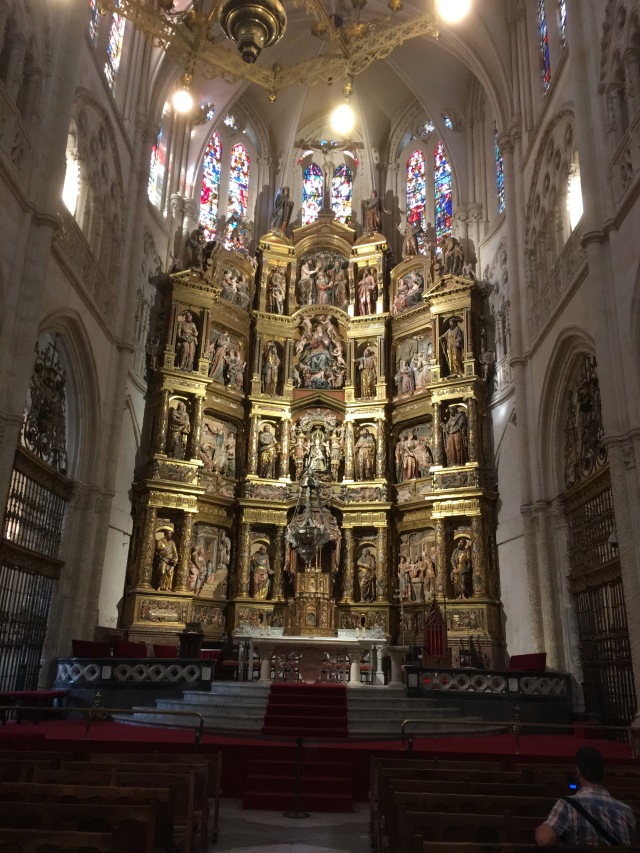
The Italian Renaissance paintings in the Burgos Cathedral moved me enormously. I imagine that each of us feels proud of our heritage. When I see this beautiful art, I sense my Italian roots and treasure the amazing artistic tradition that has interested me since I was 14 and discovered Michelangelo – read everything about his life and work that I could find. Those of you who have seen a Michelangelo sculpture in person or visited the Duomo in Florence may share that feeling.
For the next several days, we stayed overnight in Burgos and visited the city, as well as the Rioja region and Santo Domingo de la Calzada. Wine lovers must be sure to visit La Rioja during their walk on the Camino! Here is a series of photos of the beautiful town of Laguardia, a small town that towers way above the Rioja vineyards. Once you have had an opportunity to enjoy the views, I will provide a translation of the signs one encounters upon entering the main gate to Laguardia. It struck me that the area around Laguardia bears a certain resemblance to the landscapes of New Mexico:
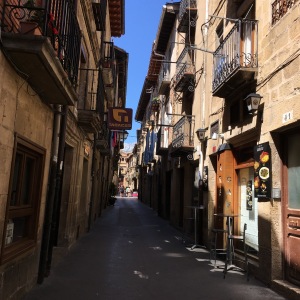
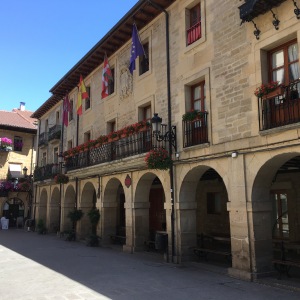
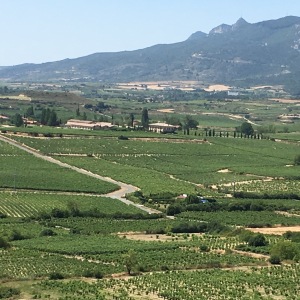
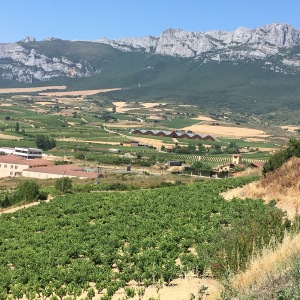
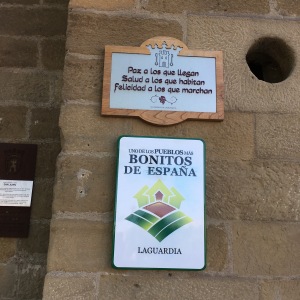
The upper plaque reads: Peace to those who arrive, health to those who live here, happiness to those who march. The lower one states that Laguardia has been designated one of the most beautiful small towns in Spain. I would have to agree with that.
Santo Domingo de la Calzada is a town that was founded by a man who wanted to provide refuge for pilgrims on the Camino. Today it is a fairly large town with a number of very interesting historic sites, including the cathedral. There is a legend that a young man and his family came there to stay at an inn. A young woman fell in love with the young man, but he did not share her feelings. She took revenge by accusing him of stealing a valuable item, which she hid in his belongings. He was arrested, and a judge condemned him to death. His family plead for his life. The judge responded that their son was as dead as the rooster on his dinner plate, at which point the rooster sprang back to life and saved the young man’s life. As a result, there is a live rooster living in the “Gallinero” (rooster coop) in the Cathedral of Santo Domingo de la Calzada. He has a hen for companionship. When he crows, you can hear him throughout every corner of the rather large cathedral and adjoining museum, which is well worth visiting.
We actually didn’t have enough time in this interesting and historic city. I would gladly return there for a visit to several historic monasteries and other sites dating back to Roman times. There is also a beautiful Parador in Santo Domingo de la Calzada, and I would highly recommend staying there. Paradores are wonderful hotels that have been created in historic buildings. The one in this city occupies the space of a 12th century hospital and is really gorgeous inside. Here are several photos of the city, including the Cathedral and Parador (the last photo in the series):
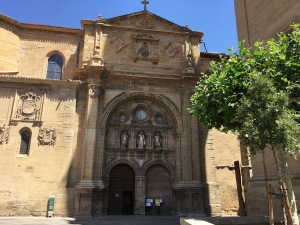
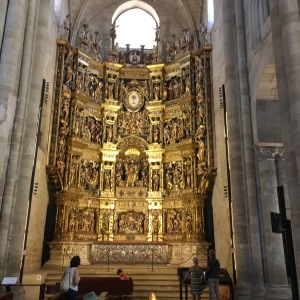
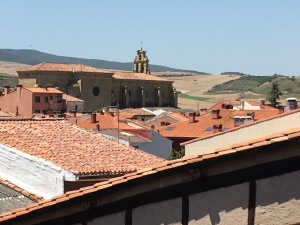
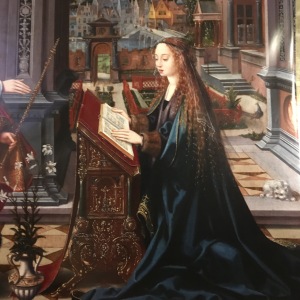
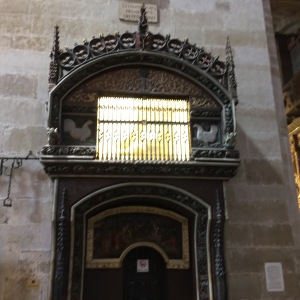
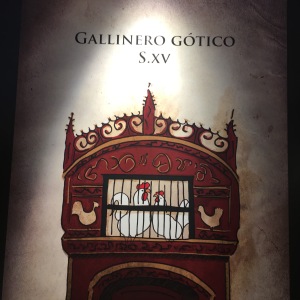
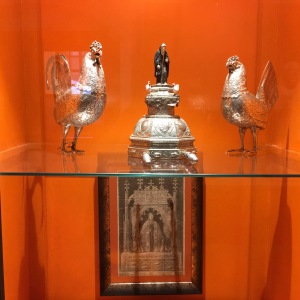
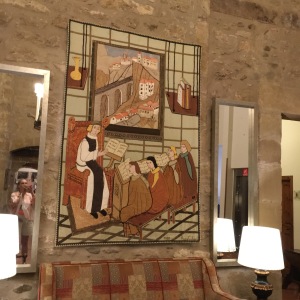
If you look closely at the last photo of the Parador, you will see that I accidentally photographed myself in the mirror on the left side of the photo while taking the shot. That was actually a rather fun coincidence.
After three nights and two days in Burgos and the surrounding region, we headed to our final destination for a driving-and-walking portion of the Camino, León, the capital city of the province of the same name. Here is a sneak preview of our hotel, also on a beautiful square by the beautiful Basilica of San Isidoro. The Basilica was built on the site of a former Roman temple. The museum adjoining the Basilica is a Must-See (caps intended!).
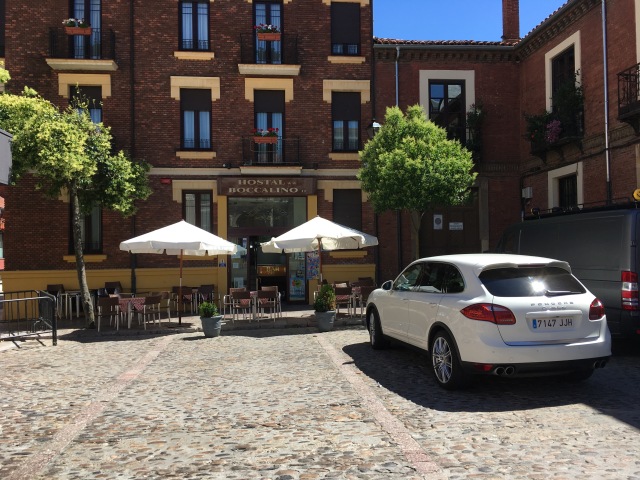

Leave a Reply
Want to join the discussion?Feel free to contribute!